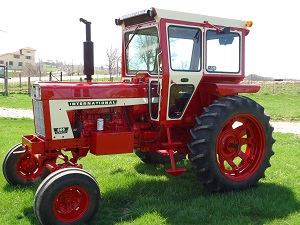
south central IOWA | RCD - 11/22/2011 23:32
Furhtermore, EPDs between herds ARE comparable whereas ratios are not. When looking at two bulls from different breeders, the WW & YW ratios cannot be used as a fair comparison because they are unique and specific to each herd. But when looking at two breeding bulls raised from different herds, the EPDs are comparable....that's why producers are encouraged to use them as a selection tool.
I think this is where you talk yourself into thinking feeding programs alter EPD's.
Ratios and their rankings ARE comparable with in a breed and in a way are useful to compare 2 different breeds if you understand ratios. How else do you get around the widely different feeding programs in the country?
Lets say your top WW ranking Angus bull ratios 120 and my top Angus bull ratios 105. Why is your top ratio bull at 120 and mine is at 105?
Because your top bull really out done his contemporaries whereas mine just slightly outdone his.
Better yet, I got tired of trying to come up with examples so I found this and copied it from the Angus Associations website...........Happy reading :-)
Contemporary groups, ratios and EPDs
Contemporary grouping allows animals to be evaluated on how well they performed compared with their herdmates raised under similar environmental conditions. This grouping accounts for environmental or unequal treatment effects, so that heritable differences, such as EPDs, can be predicted.
Two or more animals of the same sex are necessary in the contemporary group for the EPD to be calculated, assuming other data edits are met. Each animal is compared relative to the average performance of the contemporaries in the defined group. You cannot have EPDs beyond a pedigree index interim EPD without contemporary groups. A contemporary group of one animal does not provide any information to compute EPDs from the Association's NCE.
Example: There are 10 bull calves weaned at your farm or ranch (treated alike, same sex, fed/managed the same). The bulls form one weaning contemporary group. Then, you send two calves to the bull test station and feed out the remaining eight at home. Their yearling and ultrasound records will be processed as two separate contemporary groups, not as one. If you send one bull to a test station, this creates a contemporary group of one for the yearling and ultrasound data. Association ratios for these traits will be 100, and the animal's own yearling and ultrasound performance will not be used in evaluation procedures for EPDs.
A ratio is the performance on an individual animal relative to the average performance for his or her contemporaries. Contemporary groups should include as many animals as can be accurately compared.
Continuing our example, say the 10 bull calves at weaning weighed an average of 600 pounds (lb.). One calf weighed 630 lb., so he is 5% above the average of his contemporaries. His ratio is 105.
Ratio = (630 ÷ 600) x 100 = 105
Another calf weighed 570 lb., which is 5% below the contemporary group average of 600 lb. His ratio is 95.
Ratio = (570 ÷ 600) x 100 = 95
In the calculation of EPDs, the animal's own record (a weight or measure) is used relative to the contemporary group's average performance. It is sometimes a misunderstanding that the numerical ratio (like the ratio computed above) is used in the computations. Ratios can be a within-group tool; however, the use of more advanced selection tools, like EPDs, provides comparisons among all animals in the breed with greater accuracy.
|


 Bull EPD Question
Bull EPD Question